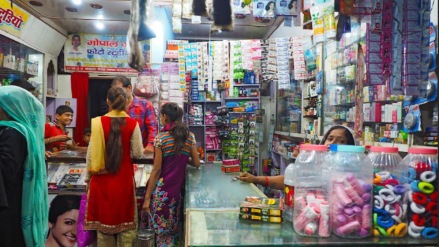Just recently, Perfetti Van Melle launched the Kaisi Jeebh Laplapayi challenge for its Centerfruit brand targeting rural markets where nearly 40% of the households don’t have access to TV and 50% have no internet connectivity. The campaign enabled real-time conversations in local dialects through a simple phone call using AI.
Last fiscal, automaker Maruti Suzuki developed a regional marketing strategy that blended technology, localisation and vernacular content. Its efforts paid off with a 15% retail growth in rural areas, outpacing urban markets, which saw a 2.5% growth in the festive quarter of FY25, the company said.
These are just two examples of how brands are tapping growth potential in rural and remote regions. There’s a clear reason why these regions are now on every marketers’ radar. Rural India is experiencing a significant rise in aspirations and digital inclusion, leading to expansion in many aspirational categories, says Soumya Mohanty, MD and CCO, South Asia, insights division, Kantar.
Despite such creative marketing initiatives, brands are often criticised for prioritising urban markets. Atul Shrivastava, CEO, Laqshya Media Group, says that many brands often treat rural marketing as an afterthought or just a seasonal push. “What brands need is not just rural reach, but impact which can come through long-term focus and not through one-off activity,” says Shrivastava.
Now look at the potential. According to Kantar’s FMCG Pulse for Q2 2025, branded products saw 5.1% volume growth in rural markets while unbranded grew at just 2.3%. This is in contrast with urban markets where unbranded products clocked 8.4% growth compared with 2.1% for branded.
Why that dichotomy? Many feel that regional markets remain underserved because of their complexity and the costs involved. As Shubhranshu Singh, CMO of Tata Motors Commercial Vehicles, said in a recent media interaction, brands must move out of their comfort zone—read high potential urban markets—and embrace the country’s full cultural spectrum. Rajiv Dubey, media head, Dabur India, argues while marketers do not de-prioritise remote markets, reach is an issue as regular media fails to deliver. Rural markets are the bedrock for Dabur’s businesses, he says. During the last fiscal, the company expanded its reach by 10,000 villages to reach a total of 1,32,000. Dabur employs free-to-air channels, single screen cinemas and consumer activations such as nukkad nataks to reach consumers in far-flung areas.
Miles to go
Kantar’s Mohanty says to succeed, marketers must go beyond basic translation and focus on true cultural localisation. “The most impactful approach is to build campaigns from the ground up using regional insights, unlocking deeper emotional resonance and greater growth potential,” she says.
Shuvadip Banerjee, chief digital marketing officer, ITC Ltd, cites an example. The company is adopting a ‘culture centric marketing’ strategy that allows it to customise first the product and then the marketing strategy for specific regions. For instance, Aashirvaad Atta recently launched Boga Atta (or white atta) in Assam because consumers in the region prefer white atta to make their daily rotis and puris. “Rural India has been one of the core industry growth drivers. We are now leveraging video content and digital platforms to reach regional audiences,” says Banerjee.
Evidently, technology and social media are playing a crucial role in bridging the rural-urban divide. Banerjee says ITC ran a campaign for Sunfeast YiPPee! in some districts of UP and Bihar using the voices of popular cricketers Surya Kumar Yadav and Jasprit Bumrah, generating AI audio creatives to drive familiarity among consumers who have access only to a feature phone. Over 400 customised audio creatives were generated keeping the local dialect and accent intact.
Short format video platforms like Moj and Takatak can replace Instagram in the media mix while targeting remote areas. “The platforms we employ do the job cost efficiently. The share of the advertising pie looks small and gives the impression of de-prioritisation. However, our spends are a little over-skewed in favour of rural to the tune of 25-30%,” points out Dabur’s Dubey.
